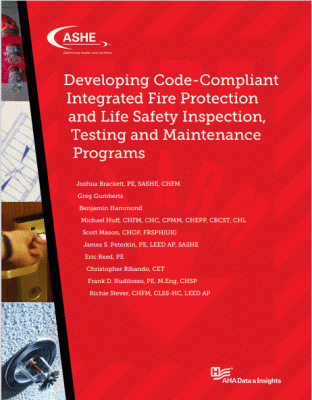Developing Code-Compliant Integrated Fire Protection and Life Safety Inspection

Planning and building an integrated life safety inspection, testing and maintenance (ITM) program is a lengthy and complicated process. While ITM programs are essential, health care facilities managers often lack the necessary guidance to develop effective programs. Notably, the anticipated CMS adoption of NFPA 101-2018 (or later) will bring ITM programs to the forefront for facilities managers across the board, when integrated life safety ITM will be required for all high-rise buildings at a minimum and facilities will have five years to develop and implement integrated life safety ITM programs. This book taps into the deep knowledge base of the field’s most qualified experts to help facilities managers at any level of experience better assess, configure and streamline crucial integrated life safety ITM programs and to guide them through the process of developing successful and effective programs. With step-by-step instructions, in-depth discussions and examples, readers will be able to understand the components of various life safety systems, coordinate with vendors and technicians, and ensure their systems are code compliant.
Member: $95.00
Non-Member: $125.00
Supplemental Materials:

